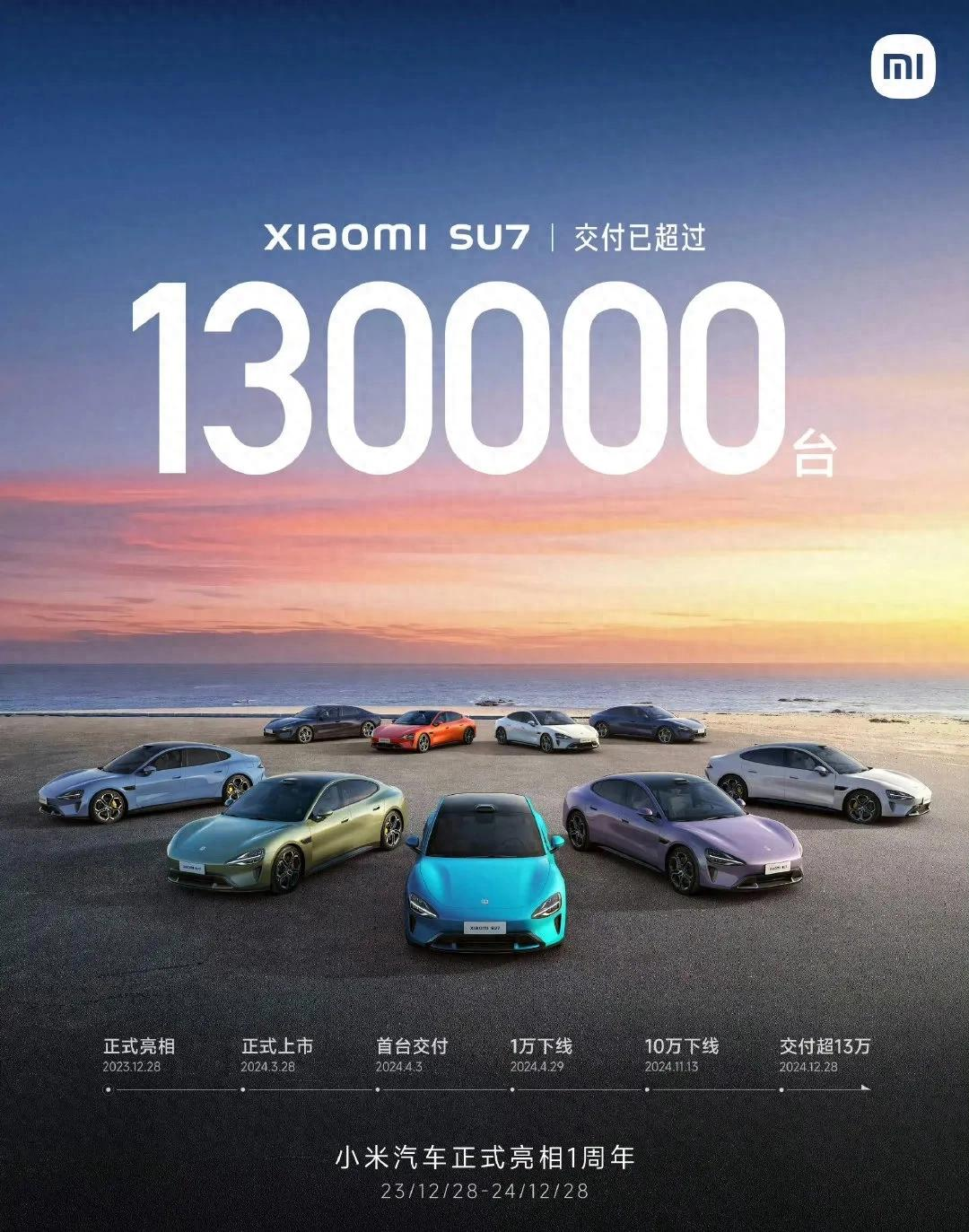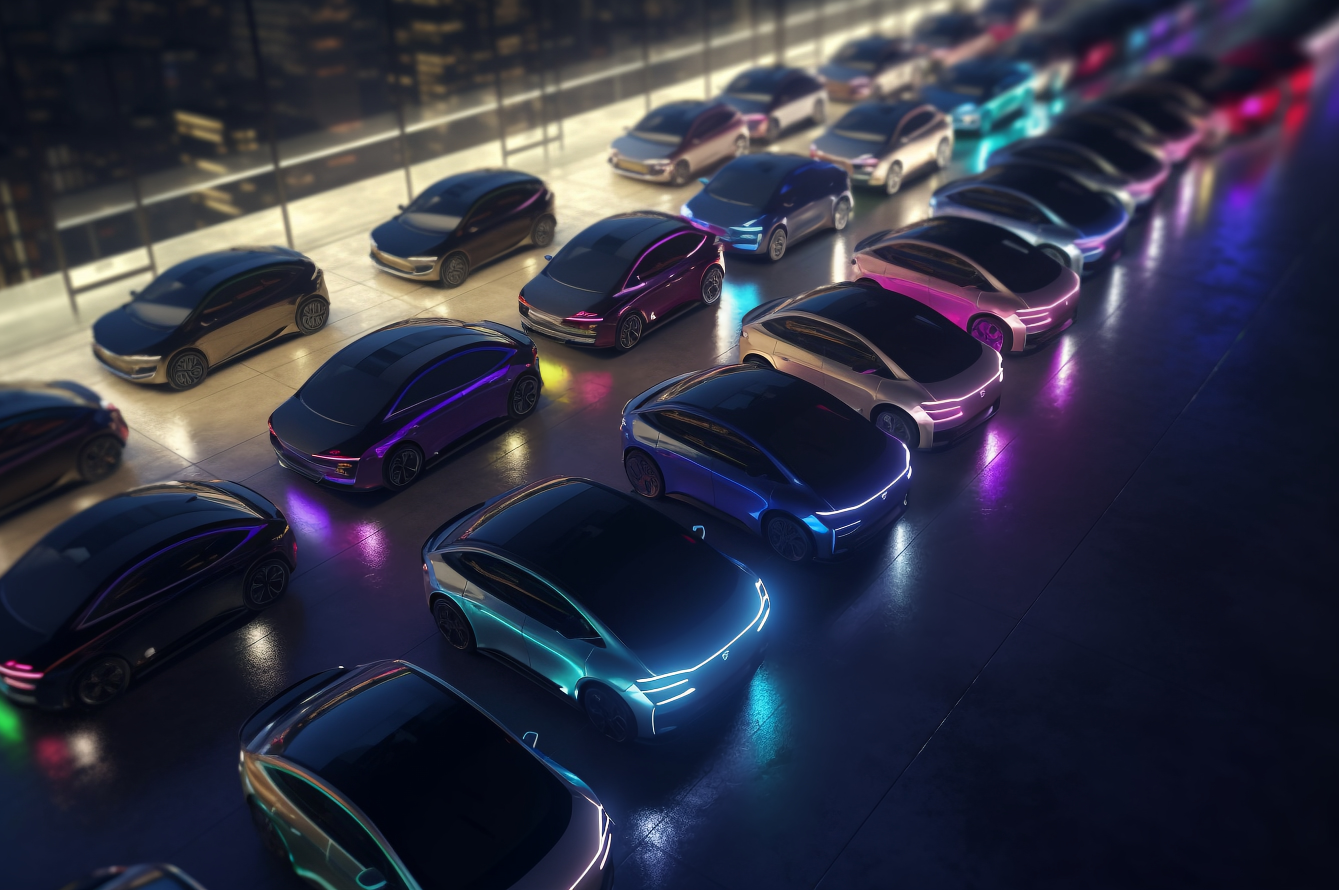
Looking back at last year's auto market, December saw a strong finish, capping off the year with high sales. This was driven by interactions among automakers, dealers, policies, and consumers. At the start of the new year, many automakers have announced their 2024 sales results, with several exceeding their targets.
By the end of 2024, some automakers far from their annual sales targets have already started boosting sales through discounts and interest-free financing. With ongoing policy support and promotional activities gaining momentum, CAAM predicts continued market improvement in December. Annual auto production and sales are expected to reach 31 million units, a 3% increase year-on-year.
Contrary to year-end expectations, a new round of price wars has begun. Since New Year's Day 2025, many car companies have launched limited-time promotions. The auto market faces intense competition at the start of the year, marking the first wave of the 2025 "price war".
Keep struggling in the whole year
In the competitive auto market over the past year, several automakers set new records for monthly deliveries. Notably, BYD, Geely, Chery, Leapmotor, Xiaomi, and Li Auto surpassed their 2023 sales targets. Zeekr, NIO, and Changan achieved over 90% of their targets, while Deepal, VOYAH, and Avatr reached more than 80%. However, some automakers maintained or saw lower sales compared to last year, with a few even exiting the market. Truly, it's a case of "some win while others lose."
To meet annual sales targets, car companies have entered "sprint mode" in December. They have intensified promotions with limited-time discounts, cash reductions, financial subsidies, and gift packages to attract buyers. For instance, some companies offer up to X0,000 yuan off all models, directly boosting consumer interest. Many new energy vehicle firms have waived December purchase taxes or provided free charging pile installation to lower buying costs.
According to statistics, in December, over 70% of auto enterprises increased their terminal discounts, with an average discount of several thousand yuan per vehicle. To accelerate new vehicle launches, many enterprises introduced annual facelifts or all-new models, leveraging the new vehicle effect to boost sales.
Based on annual sales data, BYD topped the list with 4.27 million vehicles, up 41.26% year-on-year. SAIC Group sold 4.013 million vehicles, placing it among the leaders. Changan Automobile's sales reached 2.68 million vehicles, the highest in seven years, including over 730,000 new energy vehicles, a 50% increase from last year. Chery Holding Group reported 2.603 million vehicle sales in 2024, up 38.4%, setting a new record.
New power automakers, like "catfish" in the auto market, are injecting innovative vitality and reshaping the competitive landscape. Li Auto met its annual sales target with 500,500 vehicles sold, up 33.1% year-on-year. Leapmotor sold nearly 300,000 vehicles, a 103.76% increase from the previous year. Xpeng Motors sold over 190,100 vehicles, marking a 34.23% growth.
Xiaomi announced that December 2024 deliveries surpassed 25,000 units, marking the third consecutive month exceeding 20,000 units. Since April 2024, cumulative deliveries have exceeded 135,000 units, surpassing the delivery target.


AITO delivered a total of 444,900 new vehicles throughout 2024. Among them, 49,000 new vehicles across all series were delivered in December, setting a new monthly delivery record and exceeding 40,000 vehicles for three consecutive months.
Currently, the Chinese auto market is undergoing rapid transformation. Both traditional and new energy vehicle companies face challenges. Traditional automakers struggle with rapid technological changes and high R&D costs, leading to financial pressure. Joint venture brands have lost market share due to rising domestic brands and the shift to new energy vehicles. Reshaping brand advantages and accurately positioning products are now urgent priorities. In the intelligent field, improvements are needed in user experience and data-driven operations.
New-force auto companies face challenges including developing brand recognition in the mass market and addressing consumer doubts about reliability. Unresolved profit issues stem from high early-stage R&D and marketing investments, insufficient production scale, high costs, and thin margins. Furthermore, reliance on external suppliers for key components makes the supply chain vulnerable to disruptions like chip shortages and battery supply constraints, impacting delivery schedules and user satisfaction.
The “price war” is continuing in 2025
According to the CPCA, from January to December 2024, 227 models underwent price cuts, significantly exceeding the 148 models in 2023. Specifically, there were price reductions for 88 conventional fuel vehicles, 17 hybrids, 34 plug-in hybrids, 14 extended-range models, and 82 pure electric vehicles.
Entering 2025, major car companies are using price cuts as a key strategy to gain an edge in fierce competition. According to Car Insight, in January alone, over 23 car companies reduced prices through official cuts, cash discounts, and subsidies, with the highest discount exceeding 170,000 yuan.
BYD has initiated price cuts on some of its vehicle models, with reductions reaching tens of thousands of yuan. This move stems from vertical integration and optimization of the supply chain, aiming to reduce inventory. Additionally, competition from rivals like Geely and Changan in new energy hybrid vehicles has accelerated this decision.
Tesla is unwilling to show weakness. Domestic model prices, including popular models like the Model 3 and Model Y, have dropped significantly due to cost advantages from localization. By optimizing the supply chain and increasing local procurement, Tesla continues to reduce costs. To achieve global sales targets and capture higher market share, Tesla uses a low-price strategy to attract more consumers to new energy vehicles.
Joint venture brands, including Volkswagen, Toyota, and Honda, have joined the price competition with limited-time discounts and purchase tax subsidies on many models. Facing pressures from lagging in new energy transformation and rising domestic brands, these brands have seen declining sales. To stabilize their positions, they are lowering prices to regain consumers and maintain their market share.
Although the price war can temporarily boost sales and reduce consumer costs, it will eventually compress car companies' profit margins and limit R&D investment. This hinders technological innovation and poses risks to brand image and long-term development.
Technical barriers will increase differentiation among car companies
Beyond price battles, automakers are focusing on technological innovation and new product development as key strategies for future success. In the realm of intelligent driving, they are increasing R&D investment to advance from basic assisted driving to high-level autonomy. Xpeng Motors' XPILOT system is continuously improving, expanding Urban NGP coverage to handle complex road conditions more accurately, with smoother automatic lane changes and traffic light navigation. NIO’s NOP+ function is also being optimized, using high-precision maps and sensors to enhance highway autonomous driving assistance and improve long-distance driving comfort.
The intelligent cockpit has become a new favorite. Vehicle-mounted chips are improving in performance, and operating systems now offer more features. Ideal Auto has developed a family-focused intelligent cockpit with multi-screen interaction and parent-child entertainment modes to meet travel entertainment needs. AITO enables smooth interaction and interconnection across AITO models, achieving seamless device collaboration.

 (699pic.com)
(699pic.com)
The development of new energy technologies, particularly battery innovations, is advancing rapidly. CATL's Kirin Battery and BYD's Blade Battery have set records in energy density, safety, and fast charging. The Kirin Battery uses high-nickel ternary materials and efficient thermal management to boost energy density and extend the cruising range. The Blade Battery enhances safety through structural innovation, passing the nail penetration test and raising industry standards. Automakers are now focusing on solid-state batteries and next-generation technologies with energy densities over 400Wh/kg, laying the groundwork for improved new energy vehicle performance.
The domestic auto market ended the past year on a strong note in December, with various automakers releasing their sales reports. Traditional automakers maintained their positions while seeking breakthroughs, and new force automakers continued to innovate and rise. However, the new year brings dual pressures of price wars and competition in technology and products, signaling the start of an elimination game.
Fitch Bohua's report predicts that the penetration rate of new energy vehicles (NEVs) will continue to rise in 2025, with intelligence becoming the key competitive area. Currently, NEV penetration has exceeded 50% for five consecutive months, leading to a high base effect. As a result, the growth rate of new vehicle sales is expected to slow down, with NEV sales growth projected at 15-20% in 2025. The automotive industry will face dual challenges: ongoing technological innovation and declining vehicle prices.

 Room 1104,Block B,JingBan Building,6 Middle Beisanhuan Road,Xicheng District,Beijing
Room 1104,Block B,JingBan Building,6 Middle Beisanhuan Road,Xicheng District,Beijing
 (8610)62383600
(8610)62383600
 quanqixiang@carresearch.cn
quanqixiang@carresearch.cn
 京公网安备:11010202007638号|京ICP备17032593号-2|Report illegal and bad information:010-65993545-8019 jubao@carresearch.com
京公网安备:11010202007638号|京ICP备17032593号-2|Report illegal and bad information:010-65993545-8019 jubao@carresearch.com
Legal support:Beijing Yingke Law Firm|All rights reserved, DO NOT reproduce without permission